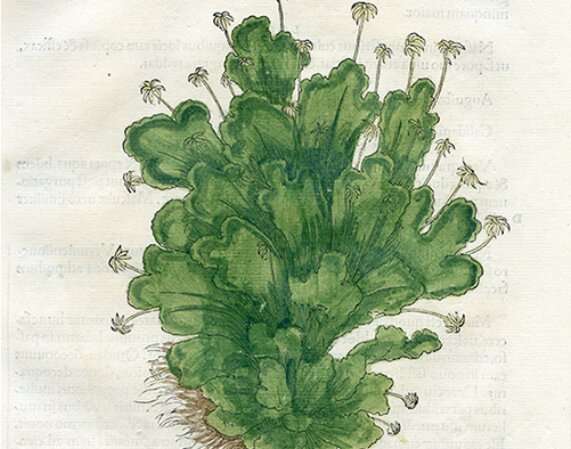#Novel hormone discovery provides new insight into the evolution of plant structure
“#Novel hormone discovery provides new insight into the evolution of plant structure”

An international study co-led by the Monash University School of Biological Sciences has discovered a stem-cell promoting hormone in the liverwort Marchantia polymopha.
The discovery, published today in Current Biology, provides a new understanding of the evolution of plant morphology.
Marchantia, a common liverwort, is a representative of an ancient lineage of plants. Their evolutionary history presents researchers with an excellent opportunity to explore the fundamental insights into how genes and hormones have evolved in plants.
“All land plants have meristems, which are pools of stem cells, from which the bodies of the plants are ultimately derived. Our study found that the number of stem cells in Marchantia is regulated by a peptide hormone called CLAVATA,” explains lead Australian study author Professor John Bowman, from the Monash University School of Biological Sciences.
The research team, which involved several collaborators from Japan, including Assistant Professor Yuki Hirakawa of Gakushuin University (a former Monash postdoctoral researcher), added a chemically synthesized MpCLE2 peptide to the growth medium of Marchantia.
“When an excess amount of CLAVATA peptide hormone accumulates, the number of stem cells is increased, which then leads to the formation of multiple branches,” added Assistant Professor Hirakawa.
“In flowering plants, whose evolutionary lineage diverged from Marchantia more than 400 million years ago, CLAVATA is known to act as a negative regulator of stem cell population that prevents their over proliferation. Our study found the same peptide hormone functions in stem cell regulation in both Marchantia and flowering plants—although it had the opposite effect.”
The finding suggests that cell-to-cell communication by CLAVATA is a fundamental mechanism for growth regulation of all land plants and provides an important clue to understanding the morphological evolution of the plants, which emerged on land around 470 million years ago.
A feature of plant growth is that they keep meristems at the tip in which cell division continues throughout the life. A small number of stem cells reside in the meristem, which acts as the ultimate source of plant organs, such as leaves, flowers, fruits and wood.
More information:
Yuki Hirakawa et al. Induction of Multichotomous Branching by CLAVATA Peptide in Marchantia polymorpha, Current Biology (2020). DOI: 10.1016/j.cub.2020.07.016
Novel hormone discovery provides new insight into the evolution of plant structure (2020, August 21)
retrieved 21 August 2020
from https://phys.org/news/2020-08-hormone-discovery-insight-evolution.html
This document is subject to copyright. Apart from any fair dealing for the purpose of private study or research, no
part may be reproduced without the written permission. The content is provided for information purposes only.
If you want to read more Like this articles, you can visit our Science category.
if you want to watch Movies or Tv Shows go to Dizi.BuradaBiliyorum.Com for forums sites go to Forum.BuradaBiliyorum.Com



